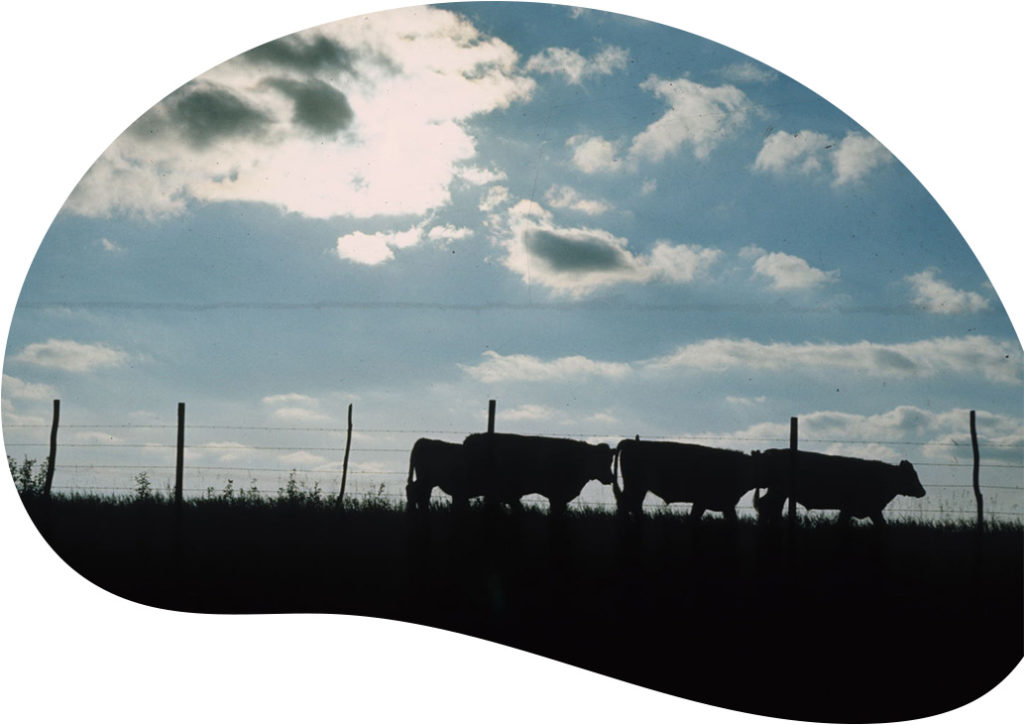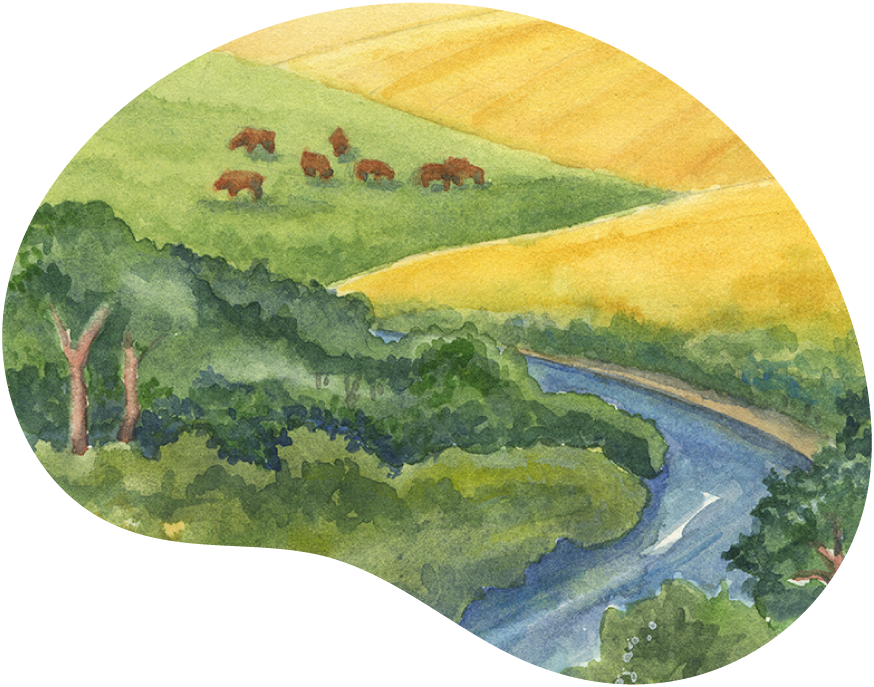Grazing Management
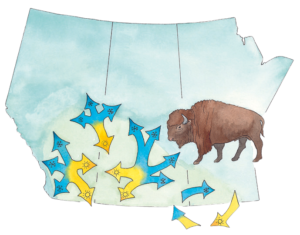 Riparian areas in the Great Plains evolved with the impact of large grazers, especially bison. The accounts of aboriginal people and early travels often described heavy impacts on the whole landscape and riparian areas in particular. But the first lesson of riparian grazing is that grazing pressure was never a year round constant on the land – after there was grazing, there was rest.
Riparian areas in the Great Plains evolved with the impact of large grazers, especially bison. The accounts of aboriginal people and early travels often described heavy impacts on the whole landscape and riparian areas in particular. But the first lesson of riparian grazing is that grazing pressure was never a year round constant on the land – after there was grazing, there was rest.
Small bands of bison resided year round in certain parts of the landscape but the major impact of the large herds was temporary. The big bison herds spent spring and summer months in the plains and then returned to the foothills and parkland for winter shelter and more abundant forage supplies. The pattern and intensity of use also varied with climatic cycles, especially drought. Predators and population levels were variable. The bottom line is that grazing was not always heavy and every year. For most riparian areas, after grazing there were variable amounts of rest, enough to sustain riparian systems.
During the winter of 1792-93, Peter Fidler travelled across the treeless plains near present day Calgary, the uplands being devoid of trees from repeated bison grazing and fire. Yet, the rest cycle for the better-watered riparian areas was sufficient to support woody riparian cover, the sole source of woody fuel for lighting Fidler’s buffalo dung fires along the way.
Grazing and Rest – Nature’s way
In a settled and fenced landscape, there is a greater risk of imposing constant grazing pressure on riparian areas. When grazing is too intense, happens too often, during vulnerable periods and without rest, riparian health and functions will decline.
No Rest
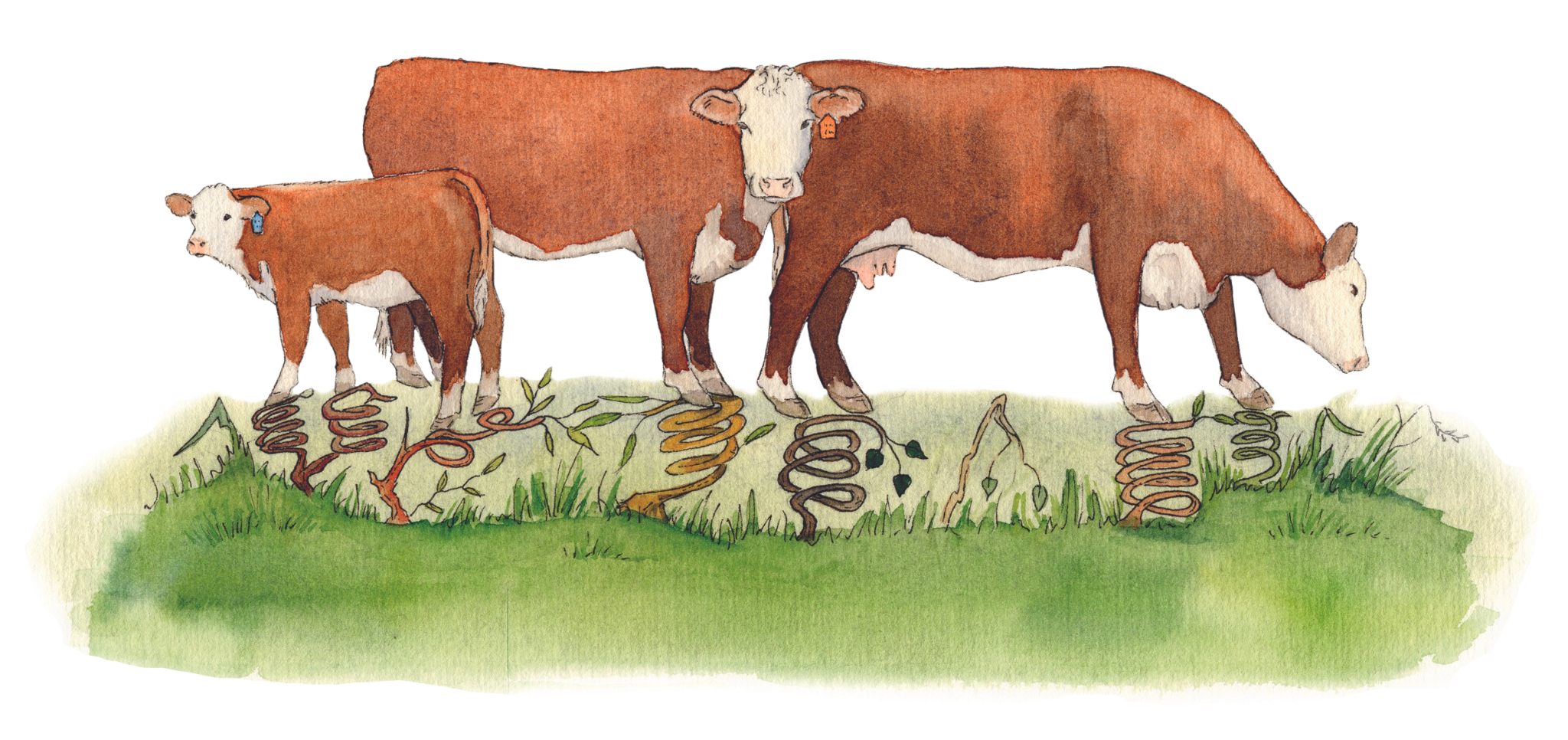
Rest

With planned periods of grazing and rest, riparian functions and health will be restored
When we graze too many, too early, too long, too often, there is not effective rest to allow the riparian plants to regrow and store essential energy (carbohydrates) so the plants can grow again next year.
The 4 basic principles of range management include:
- Balance animal needs with available forage supply
- Distribute livestock evenly
- Avoid or minimize grazing the area during fragile or vulnerable periods
- Provide effective rest during the growing season
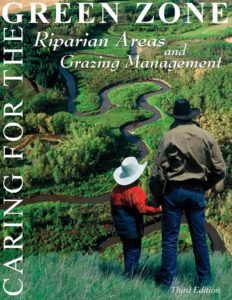
Caring for the Green Zone
Third Edition
The Riparian Areas and Grazing Management booklet has been written for those people who can most effectively influence pastures, rangelands and riparian areas with their management – ranchers and livestock producers.
This booklet provides information on riparian areas and grazing management, and profiles ranchers who are currently implementing successful grazing management strategies. The information is intended to help landowners make effective decisions for their operations.
VIEW FULL DOCUMENT (PDF, 2.9 MB, 47 pages)
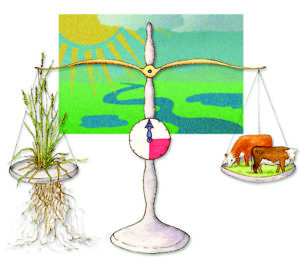
Additional Agricultural Links & Resources
- Range and Pasture Management – Alberta Forestry and Parks
The official website for Public Lands in Alberta providing range and pasture management information and tools and reports provided by Alberta Forestry and Parks. Provides detailed information on action plans and services.
- United State(s) Department of Agriculture – Natural Resource Conservation Service
Since 1935, the Natural Resource Conservation Service (originally called the Soil Conservation Service) has provided leadership in a partnership effort to help America’s private land owners and managers conserve their soil, water, and other natural resources.
- Society for Range Management
The Society for Range Management is the professional scientific society and conservation organization whose members are concerned with studying, conserving, managing and sustaining the varied resources of the rangelands which comprise nearly half the land in the world. Established in 1948, SRM has over 4,000 members in 48 countries, including many developing nations.
- Prairie Conservation Action Plan
The Prairie Conservation Forum was established by the Government of Alberta in 1989 to convey Alberta’s support and commitment to implementing the Prairie Conservation Action Plan (PCAP). The PCAPs are five year blueprints for conserving, protecting and managing native prairie and parkland species, communities and habitats, and was initiated by the World Wildlife Fund, Canada and the provincial governments of Manitoba, Saskatchewan and Alberta to offer a prairie-wide vision for the preservation of Canada’s prairies.


